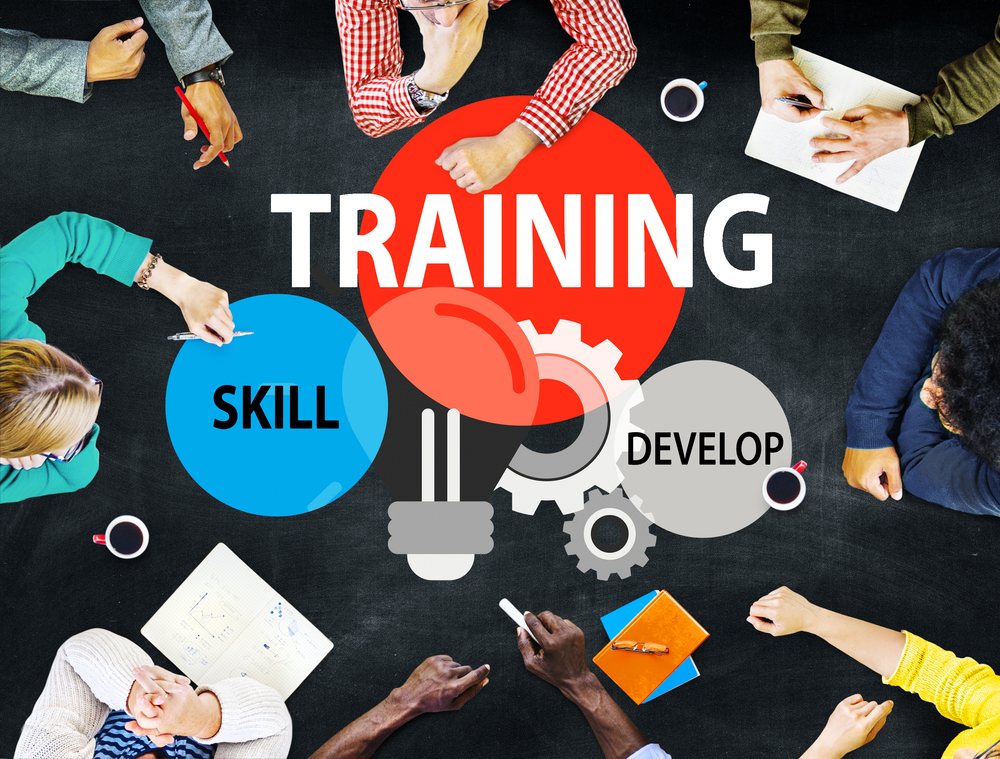Training and development are key to success in a postindustrial economy, i.e., one that is more focused on providing services than producing goods and services. In an industrial economy, of course, it’s important for employees to be trained.
But major gains in productivity and value typically come from acquiring more and better tangible assets, such as machinery and factories. In a postindustrial, service-focused economy, a business’s best assets are its employees. Companies compete for the top talent coming out of school and seek to lure established professionals away from other businesses.
Nurturing Top Talent
But recruitment alone won’t address a company’s talent needs. Training and development (T&D) are necessary to take raw talent and industry-specific skills and focus them to suit the needs of a specific team or organization.
Smart post-industrial-economy companies understand the need to invest in their human capital—just as smart industrial-economy companies invest in their physical capital. In 2018 alone, U.S. companies spent $87.6 billion on training expenditures, which include payroll and spending on external products and services.
With all that money being spent and with success in a competitive business environment dependent on the success of training efforts, it’s crucial that T&D efforts be well-planned and well-executed.
With this in mind, we polled some T&D experts on what they see as best practices in the field. Here are a few of the key takeaways.
Content Trumps Tech
Most of the experts who offered feedback on best practices in T&D utilize some form of technology to aid their training programs. These often include a learning management system (LMS) or tools like artificial intelligence (AI) or virtual or augmented reality (VR/AR).
But Jason Arnold, director of leadership solutions at Inspire Software, points out that even the best technology is ultimately just a vehicle for delivering your training content.
“Keep in mind that, while technology and learning platforms evolve, content still remains king,” he says. “You can have a world-class LMS or strategy software, but if [your] learning content, whatever the subject, is generic and not backed up with thorough research, then you may be guessing on what actually works and has been proven to work within organizations.”
Before investing in flashy and expensive training technology, make sure the underlying content is solid and has been vetted by company leaders, subject matter experts (SMEs), and training professionals. Just because a training program is effective at teaching doesn’t necessarily mean it’s teaching the right material.
Effective Metrics
One of the hardest aspects of any business initiative is measuring results. Training initiatives are no exception.
“We understand that trying to draw one-to-one causation conclusions for a training’s direct impact to a business is very difficult, but we have found a reliable method of measuring both the individual growth and business impact for our training,” says Rich Maley, director of learning and development at SE2. “Seldom is there a significant business impact based on a single variable; however, what we have found is that we can reliably link the business impact of our training through correlation metrics.”
Correlation metrics can be used to develop key performance indicators (KPIs). These are measurable values that help determine how effectively your training efforts are working. The key word is “measurable.” Too often, companies rely on subjective trainee feedback from surveys. These are difficult to effectively compare.
Two training attendees may have very different survey answers on how effective they thought a training was or how engaged the trainer was, for example.
“Most organizations have relied on qualitative data for many years to evaluate the effectiveness of their T&D efforts,” says Arnold. “Surveys are still a meaningful source of data, but often prove to be subjective to the person answering the survey and may not give greater insights into how the T&D efforts are going on an objective, non-biased level.”
Effective KPIs should rely on objective data that can be reliably compared with other data points, such as time to complete a task, number of jobsite accidents, etc.
Maley notes that in the era of big data and a knowledge-based economy, T&D professionals can and should be evaluating real-time data with tools, like LMS, to facilitate the collection and review of data.
Have a Solid Process in Place
Having solid content and the ability to measure improvements from training makes a good start. But an overall process needs to be put in place for any training program. The process is important not only for individual instances of a training program but also for iterative modification and improvement.
“A major cause why training does not become successful is the lack of effective planning for their implementation in advance,” says Gargi Rajan, head of HR at Mercer Mettle. “If you are thinking of coming up with a training program inside the organization, always have an infrastructure assessment. Think of all kinds of equipment to make training successful and check whether or not you have them like LMS, videos, rooms, people, technological tools, and the learning material.”
This process should involve, at a minimum:
- Development of the training program content
- Identification of KPIs
- Creation of objective measurements
- Pretraining evaluation
- Training
- Posttraining evaluation
- Data review and analysis
- Program review and iteration
The process is never truly complete, and the training program is never truly finalized, as each training will provide new data that should influence and shape the program’s goals, strategy, and execution.
The experts who shared their insights on T&D best practices utilized a variety of techniques, technologies, and approaches and have trained employees across an array of industries.
Nevertheless, their input points to several T&D keys that are relevant to any industry regardless of the supporting technologies and tools utilized: the central importance of training content, the need for effective metrics, and the benefits of implementing a strong training process.
These best practices should be incorporated into any training program, regardless of industry or organization.

